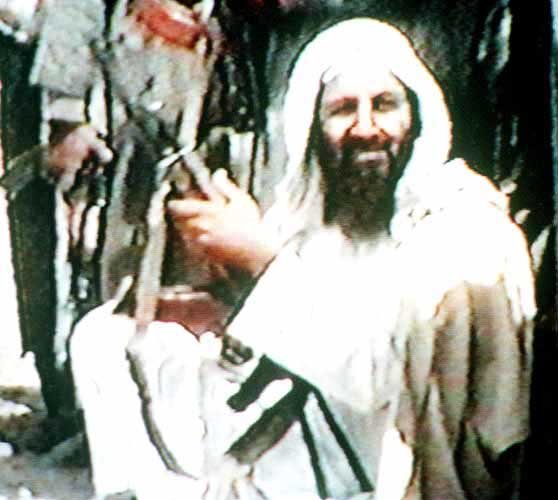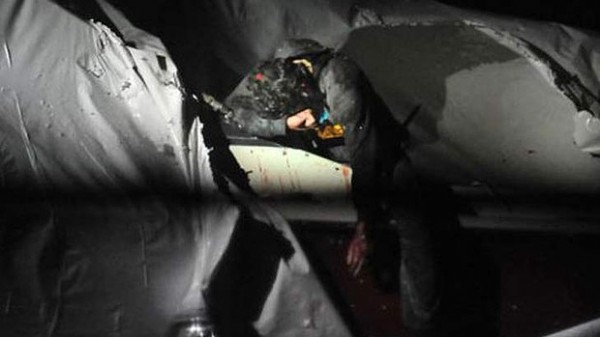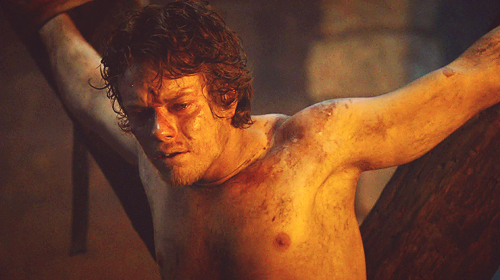<!– Begin Social Code —
What this captures is rarely simple.
The World’s Stupidest Controversy© (at least since the Muslim community center near the World Trade Center took over the summer headlines) continues apace. It’s becoming increasingly clear that the whole “controversy” over the Rolling Stone cover is mostly being drummed by up right wing nuts who want to increase suspicion that the “liberal media” secretly loves terrorists, though there have been a handful of narcissistic liberals who have joined in, because they want a piece of the “pretending you hate murder the mostest” contest to gain a gold star in murder-hating. (American politics is largely governed by the logic of the playground.) To add more fuel to the fire, Sgt. Sean Murphy, who photographed Dzhokhar Tsarnaev’s capture, has released his photos against the Boston P.D.’s will, in an attempt to show the “real” Tsarnaev. Murphy explains that his photography doesn’t deal in nuance or complexity, and it certainly doesn’t ask the viewer to think about complex issues like how appearances can be deceiving. No, Murphy demands photography be an art where the bad guys twirl mustaches and wear black hats, and the good guys have strong chins and white hats.
Photography is very simple, it’s very basic. It brings us back to the cave. An image like this on the cover of Rolling Stone, we see it instantly as being wrong. What Rolling Stone did was wrong. This guy is evil. This is the real Boston bomber. Not someone fluffed and buffed for the cover of Rolling Stone magazine.
It’s worth remembering that the RS picture is not a “fluffed and buffed” professional shot at all, but a selfie that Tsarnaev took himself, perfectly fitting with the story’s theme about the gulf between how Tsarnaev presented himself to the world and who he apparently really is.
Anyway, we get the point. Murphy eschews subtlety and thinks an image should be simplistic, childish (or caveman-ish), with its emotions blunt and in your face. No thought allowed. You should know exactly how to feel just by looking at it, no matter what it is, and it certainly shouldn’t cause you to feel any need for self-reflection or to ask yourself why this image makes you feel the way you do. Presumably, this means no context, cause context starts to introduce the complications that Murphy claims to so hate.
So what did Murphy offer as a context-free image that makes it crystal clear that the bad guy is a bad guy that you should hate, even if you have no idea who he is? I’d imagine a picture of the bad guy posing by some guns and trying to look badass, which is what I think of when I think of simple, blunt images that you can understand immediately without context. Something like this:

But that’s not what he offered. He offered this:

Interesting: An image of a bloody, wounded person in a submissive pose. Okay. What about this?
I will say that Murphy, despite clearly knowing nothing about the art of photography, has a native sense of how to shoot good photos. But he’s lost the plot if he thinks these photos require any less context and interpretation than the Rolling Stone cover. Just taken without context, the RS cover is a picture of a handsome kid taking a selfie. Without context, these two photos are pictures of a wounded, exhausted kid turning himself over to some unknown people who are apprehending him. If you didn’t know who this was, it would be just as easy to believe that the person in it is a hostage in a war as a terrorist who has finally been caught by the cops. You need the context to be able to know how to feel.
In fact, I could easily argue that images of people being hurt and vulnerable are far more likely to cause people to feel pangs of sympathy, even if they know better, than images of the bad guy looking handsome, which tends to only creep people out. (Which was the point.) For instance, take one of my very favorite TV shows, Game of Thrones. One well they regularly go to in order to make you feel more sympathy for a character is to show that person hurt and exhausted.
Example #1:

Jamie Lannister, would-be child killer whose incestuous relations with his sister laid the ground work for a murderous war over a throne that wouldn’t be contested if he had kept his hands off Sis. Up until season three, Jaime is played as a pretty much black hat evil villain (though a handsome one, so I guess that confuses the idiots who are up in arms about the RS cover), the kind you hiss and boo when he’s onscreen. And then he loses his hand and is filmed as broken, pathetic, wounded, and lost, opening up viewer sympathies so arguments about Jamie’s good side can be introduced.
Example #2:

Prior to this, Theon was also a black hat villain, who turned his back on his friends and killed two innocent little boys to scare a conquered people into submission. But now he’s been tortured and beaten into submission, inviting enough sympathy from the viewer that we cheer upon hearing that his sister is rallying the troops to come save him.
Example #3:

Obviously, Ned Stark is mostly a white hat character, but I include this photo of him in a similar pose of submission to make this point: Murphy claims that it’s obvious that the guy with his head down and the exhausted look on his face who is submitting to authority is a villain, something that we should all know upon looking at him. And that such an image would in no way cause people to glamorize him, etc. So why do filmmakers use this pose so often to make characters seem heroic?
Counter-theory: While the RS cover may give a small amount of fuel to the weird online cult of Jahar fangirls, who are, in the end, childish and powerless, this image of Tsarnaev looking broken and wounded could very well be used by Islamic terrorist propagandists as inspiration. This photo could become a rallying point for the very fundamentalist terrorist websites and publications that fueled the Tsarnaev’s ideological spiral that led to violence. In fact, I would be very surprised if it did not.
Not that I think that justifies censoring it. I’m glad Murphy released these photos, because it is important to see that the bad guy is not a mustache-twirling villain, but that bad guys are human, and we are only hurting ourselves if we pretend otherwise. It’s just telling that a picture that has a lot more potential to be used to enrage and inspire Islamic terrorists is being applauded by the right, when one that really can’t be used for that is being turned into a controversy. That would be because Murphy’s photo doesn’t fit into the “evil liberal media loves terrorist” narrative—and the narrative, not the facts, is all that the conservatives who are the bulk of the fauxtroversy care about.
<!– Start Bottom Social Sharing Buttons —
<!–
–>




